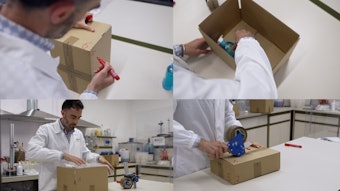
Fast-moving consumer goods companies are under increasing pressure to launch more products to market at a faster pace than ever before.
Cosmetics and personal care brands, retailers and manufacturers are not immune to this pressure, especially with changing consumer demands, keeping up with the latest trends, increased competition from new, upstart direct-to-consumer brands and ongoing market disruptions and supply chain challenges.
How are cosmetics and personal care companies able to keep up with the pace of change? For many companies, the answer to managing this growing complexity lies in transforming operations. By retiring a spreadsheet-based approach for developing new products and adopting a modern end-to-end product development platform technology like Product Lifecycle Management (PLM), companies supercharge innovation, speed and accuracy.
PLM replaces hundreds if not thousands of siloed and potentially outdated and definitely error-prone spreadsheets. PLM is an innovative solution that empowers efficiency and connects all teams from marketing, sales, R&D, product development, sourcing, quality and compliance and everyone in between to the same product data to reduce costly mistakes, boost product margins, optimize product portfolios and drive time to market.
How do you know that developing new products and launching them to market with spreadsheets is slowing you down? Read on to discover the Top 3 ways spreadsheets are hindering your speed to market.
1. Chasing up-to-date product information and knowing who is doing what with that data and when.
When you have an increasing number of products in development, all running on different completion timelines, sourced from multiple vendors in different locations with some team members involved in some but not all phases of development, making sure you have all the most recent product information at any given time is like going on a wild goose chase.
You have to check with different departments and everyone seems to have a different version of data saved on their desktop. Twenty spreadsheets later and it turns out the most accurate information is with someone who is on vacation for the next two weeks. Here come the countless emails and phone calls to internal team members and to suppliers checking what information is right. For them, this is duplicated work and for you, it’s needlessly time-consuming and breeds uncertainty in making decisions.
Is this data chaos and lack of transparency into who is doing what and when, slowing your time to market? Absolutely. The lack of one centralized and up-to-date product information source and clear visibility into team workflows, hand-offs and to-dos are major ways spreadsheets are derailing your launch timelines. A next-generation PLM solution is a “single source of truth” for all product information and has process management, workflows and calendars built-in to solve these problems and more.
2. Internal team collaboration and supplier management are confusing and disconnected.
A member of your marketing team has a great idea of how to position a product that is selling well on the West Coast for launch on the East Coast, but the idea will mean changes to the packaging to be more appealing to that market. Unfortunately, no one seems to know quickly and easily who worked on the original product because that information is not tracked in any of the spreadsheets on hand. Instead of being able to simply update the existing product packaging, the entire process must start all over again and now has stretched timelines to the point that there is no way to make the launch window. The idea must be scrapped or adjusted again for a new timeline. This means missed opportunities for market expansion, increased sales, market share and profits.
Collaboration with the packaging and artwork vendors is also a challenge. You’re tired of wading through a sea of packaging and product suppliers every time you want to choose who to shortlist for sourcing. You can’t find the suppliers’ info spreadsheets but you’re sure you saw them here last week. Time to do things differently.
Working with a modern PLM solution streamlines internal collaboration, empowers easy updates to existing products and increased visibility into product and packaging sourcing and creation. By centralizing all product-related data, your teams will eliminate multiple spreadsheets, thousands of emails and vastly improve time to market.
3. Data entry errors and missed changes are increasing compliance risks.
A discontinued ingredient has been found listed in the new product formulation. An outdated spec sheet was sent out to the supplier for production. Production comes to a halt and go-to-market slows right down. Worries about maintaining compliance grow. Using siloed spreadsheets to track formulation changes and compliance has become a constant bottleneck for launching products on time. It’s time for a digital solution that captures and cascades all formulation changes automatically, so nothing is missed. With PLM, you reduce errors and have the flexibility to adapt quickly to whatever comes your way and get your compliant products to market on time.
Are you ready to learn more about how an innovative PLM solution replaces spreadsheets of all kinds? Dive a bit deeper and download our new eBook Spreadsheets vs. PLM How do you know when it’s time to ditch spreadsheets? by filling out the form above. You’ll learn how PLM is the digital foundation for growth and hear from other cosmetics and personal care companies that have already adopted PLM and retired spreadsheets for good.
Disclaimer:
The above paid-for content was produced by and posted on behalf of the Sponsor. Content provided is generated solely by the Sponsor or its affiliates, and it is the Sponsor’s responsibility for the accuracy, completeness and validity of all information included. Global Cosmetic Industry takes steps to ensure that you will not confuse sponsored content with content produced by Global Cosmetic Industry and governed by its editorial policy.









